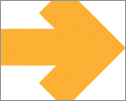Earlier this year, media reports of problems with gypsum wallboard imported from China caused concern for construction industry professionals and owners of newly constructed or remodeled homes. You should be aware of this issue and how it could affect roof system installations.
The problems
Between 2005 and 2007—when the U.S. housing boom was at its peak and domestic gypsum wallboard production could not meet demand—gypsum wallboard was imported from China. According to the Gypsum Association, about 320 million square feet of Chinese gypsum wallboard was imported into North America during that time period; this figure represents about 0.5 percent of the total amount of gypsum wallboard sold during that period.
Most of the Chinese gypsum wallboard reportedly was used in Gulf and Atlantic coast regions of Alabama, Florida, Louisiana, Mississippi and Texas for post-hurricane repairs and rebuilding. Problems being reported include the wallboard emitting a sulfur or rotten egg odor and, in some instances, corrosion of metal components such as wiring, air-conditioning coils and fasteners.
Researchers initially have traced the problems to gypsum wallboard made in China using large amounts of fly ash as a gypsum substitute. Fly ash, a residue created by coal combustion, generally is captured from coal-fired power plants' chimneys.
When exposed to moisture, fly ash-containing gypsum wallboard has been shown to produce relatively high concentrations of sulfur compounds. Gypsum wallboard routinely comes in contact with moisture during manufacturing, installation (finishing), painting and while in service.
Knauf Plasterboard, Tianjin Co., Tianjin, China, a subsidiary of Knauf International GmbH, Iphofen, Germany, has been identified as one source of the problematic gypsum wallboard. Chinese gypsum wallboard usually can be identified by "Knauf," "ASTM36" (sic) or "China" markings.
The Gypsum Association reports its members do not use fly ash when manufacturing gypsum wallboard in North America because fly ash has a different chemical composition than gypsum; instead, they use mined, natural gypsum ore and synthetic (byproduct) gypsum. Synthetic gypsum is produced when coal-fired power plants clean their emissions. Stack emissions are fed through limestone slurry in a process that produces calcium sulfate—the chemical name for gypsum. Synthetic gypsum is chemically identical to gypsum ore.
Be vigilant
Although I have not heard reports of Chinese gypsum wallboard problems being associated specifically with roof assemblies, the potential exists. Type X gypsum wallboard sometimes is specified as a thermal barrier layer over metal roof decks. Also, gypsum wallboard sometimes is used as backup for exterior insulation and finish system claddings.
If problems similar to the Chinese gypsum wallboard issues are identified and associated with a building's roof assembly, paper-faced gypsum wallboard's use as a roof assembly component first should be confirmed. There has been no correlation between the Chinese gypsum wallboard problems and glass mat-faced gypsum board products often used for roof assemblies, such as Atlanta-based Georgia-Pacific's DensDeck® roof board product line.
If paper-faced gypsum wallboard's use is confirmed, you then should determine whether the gypsum wallboard was produced in China or North America; this usually can be determined by reviewing product purchasing or delivery paperwork or examining product markings.
If Chinese gypsum wallboard is identified, you should report its presence to the U.S. Consumer Products Safety Commission.
Mark S. Graham is NRCA's associate executive director of technical services.



